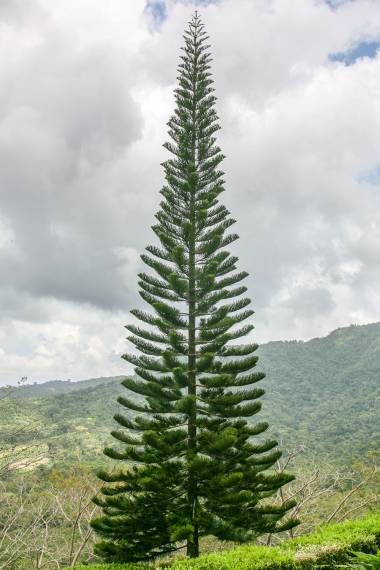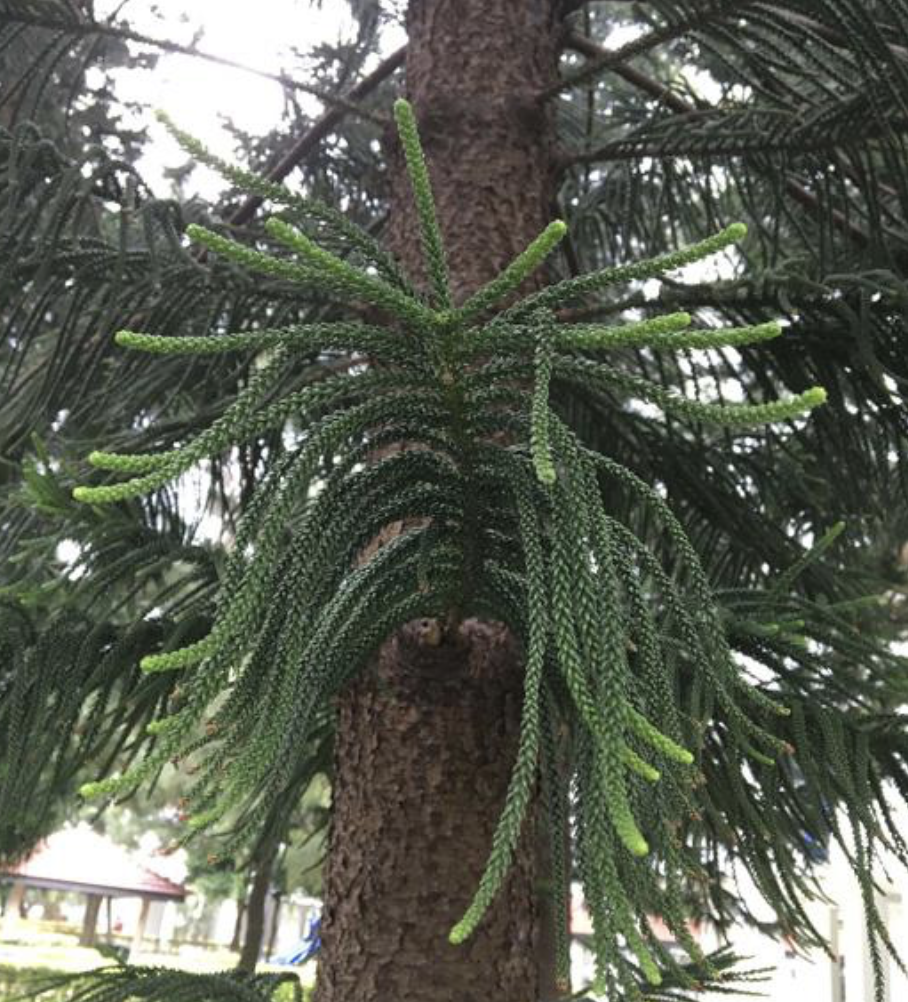Cook pine
Araucaria columnaris
Description
Araucaria columnaris is a tall evergreen conifer growing up to 30 m. It has a slender, spire-like crown. The bark is dark brown, rough and papery, peeling off in thin strips. Leaves are dark green, small and needle-like, closely-overlapping and spiralling densely around twigs, giving branchlet an appearance of a plaited cord. The tree sheds whole branchlets rather than individual leaves. Cones are produced at branch tips, male and female cones are found on separate trees. Male cones are cylindrical, pollen-bearing. Female cones (or seed cones) are larger and broader, ovoid, woody with spiny cone scales, mature from green to brown, before disintegrating to disperse seeds. This species was named after Captain James Cook, who discovered the plant on Isle of Pines in New Caledonia.
Place of origin
New Caledonia
Ethnobotanical uses
Cook pine is commonly grown all over the tropics for ornamental purpose. Young potted trees can be used as Christmas tree substitute in tropical regions. It is also commonly planted as timber tree elsewhere for its lightweight softwood, decorative and straw-coloured, used to make furniture and bowls.
IUCN conservation status
Least Concern (LC)



